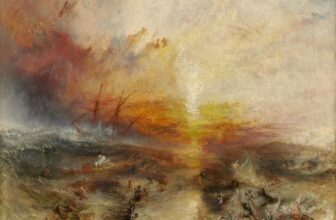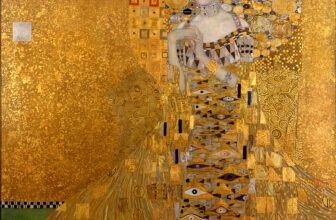
The Mysterious Odyssey of Van Gogh’s Most Emotional Masterpiece
In the world of art, few paintings carry as much emotional weight, historical intrigue, and tragic beauty as “Portrait of Dr. Gachet” by Vincent van Gogh. Created in the final months of Van Gogh’s life, this painting not only embodies the tortured genius of the artist but also serves as a psychological mirror reflecting his fragile state of mind. With its swirling brushstrokes, melancholic figure, and storied past, the Portrait of Dr. Gachet has become an icon, not just of Post-Impressionism, but of the human condition itself.
So what happened to this famous portrait? Let’s unravel the layers of one of history’s most poignant masterpieces.
Who Was Dr. Gachet?
Dr. Paul Ferdinand Gachet was a homeopathic physician, art lover, and friend to many Impressionist painters. He lived in Auvers-sur-Oise, a quiet village north of Paris, where Van Gogh spent the last weeks of his life after being discharged from the asylum in Saint-Rémy. Theo van Gogh, Vincent’s beloved brother and supporter, had sought out Dr. Gachet to care for Vincent, believing that the physician, who was sympathetic to artists and reportedly suffered from melancholy himself, would understand the emotional depths of the troubled painter.
Van Gogh initially felt a kinship with Gachet. He famously wrote to Theo, “I’ve found a true friend in Dr. Gachet, something like another brother.” But this optimistic tone didn’t last long. As the days passed, Van Gogh grew increasingly disillusioned, writing later that Gachet seemed “sicker than I am, I think, or shall we say just as much.”
This duality, friendship and despair, would manifest profoundly in the portrait he would paint of the doctor.
The Meaning Behind the Portrait
Painted in June 1890, just a few weeks before Van Gogh’s tragic suicide, Portrait of Dr. Gachet captures the likeness of a weary, contemplative man resting his head on one hand, eyes slightly downcast. The melancholic expression, paired with Van Gogh’s characteristic swirling, emotionally charged brushwork, speaks volumes beyond the literal image.
The doctor is portrayed seated at a table, beside which lay two yellow books and a sprig of foxglove, the source of digitalis, a medicine used to treat heart conditions and mental disorders at the time. The inclusion of foxglove adds a layer of symbolism: both a nod to Gachet’s medical profession and possibly a subtle commentary on Van Gogh’s own battles with mental health.
Art historians and critics interpret the painting as a reflection of Van Gogh’s state of mind in his final days. The doctor, rather than appearing as a figure of comfort, seems burdened, fatigued, perhaps a mirror of Van Gogh himself. The somber color palette, dominated by blues and muted tones, enhances the overall aura of sorrow. It is as much a portrait of Van Gogh’s inner turmoil as it is of Dr. Gachet.
What Type of Painting is Portrait of Dr. Gachet?
The Portrait of Dr. Gachet is a Post-Impressionist oil painting. Post-Impressionism is characterized by vivid colors, thick application of paint, and real-life subject matter, but it also leans toward emotional expression and symbolic content. Van Gogh’s style, heavily textured brushstrokes, unorthodox color use, and raw emotional honesty, epitomizes the movement.
There are actually two known versions of this portrait, both painted by Van Gogh himself. The first, widely considered the more significant and expressive, is the version that achieved global fame. The second, held in the Musée d’Orsay in Paris, is slightly different in composition and tone, with more varied colors and a different treatment of the background.
The painting reflects Van Gogh’s shift toward symbolism and psychological depth. His Post-Impressionist approach sought not just to replicate the visual world but to convey the emotional resonance beneath it.
What Happened to the Portrait of Dr. Gachet?
The first version of the painting has had a mysterious and controversial journey.
After Van Gogh’s death in 1890, the painting remained in the care of his brother Theo, who died just six months later. It then passed to Theo’s widow, Johanna van Gogh-Bonger, who played a pivotal role in promoting Van Gogh’s art. Eventually, the painting found its way into private collections.
In 1911, it was acquired by the German collector Dr. Gustav Rau, and later by Siegfried Kramarsky, a German-Jewish banker who fled Nazi Germany with his art collection. Kramarsky took the painting to the United States, where it was loaned to the Metropolitan Museum of Art in New York for many years.
But in 1990, the art world was stunned when Portrait of Dr. Gachet was sold at auction for $82.5 million (equivalent to over $170 million today), making it the most expensive painting ever sold at that time. The buyer? Japanese industrialist Ryoei Saito, the chairman of Daishowa Paper Manufacturing.
What happened next raised eyebrows worldwide.
Saito, who was deeply moved by Van Gogh’s story and the portrait, declared in a press conference that he wanted the painting to be cremated with him upon his death. The statement sparked outrage and panic. Saito later clarified that he was speaking figuratively, but the art world remained on edge. When Saito died in 1996, his heirs were reportedly forced to sell off many of his holdings to pay inheritance taxes.
Since then, the exact whereabouts of the first version of Portrait of Dr. Gachet have remained unknown. Some speculate it remains in a private collection in Switzerland, others believe it is in Japan. There are even rumors that it was quietly sold again, but no definitive proof has emerged.
Meanwhile, the second version resides safely at the Musée d’Orsay in Paris, where it continues to draw thousands of visitors every year.
Who Bought the Portrait of Dr. Gachet?
As mentioned, the infamous 1990 auction at Christie’s New York saw Portrait of Dr. Gachet sold to Ryoei Saito for a then-unprecedented $82.5 million. Saito also bought Renoir’s Bal du moulin de la Galette for $78.1 million in the same week.
Saito’s purchases symbolized the height of Japanese economic power in the 1980s and early ’90s. At the time, Japan was buying up global assets, from New York skyscrapers to European art. The purchase turned Saito into a household name in the art world and cast a spotlight on the commodification of masterpieces.
After his death, the painting’s trail went cold. The world hasn’t seen the first version of Portrait of Dr. Gachet in public since.
Van Gogh and Dr. Gachet: A Tragic Bond
The relationship between Van Gogh and Dr. Gachet was brief but deeply significant. Gachet was meant to be Van Gogh’s guardian of mental health, a lifeline in the storm of Vincent’s final months. But the artist quickly realized that Gachet was as fragile as he was.
There’s a haunting symmetry in that relationship: both men, immersed in melancholy, trying to save one another through understanding and art. Van Gogh’s assessment of Gachet as “sicker than I am” was less a dismissal and more a resigned observation, a recognition of shared despair.
Yet in Gachet, Van Gogh found someone willing to sit for him, someone who didn’t mind being immortalized not as a stoic or smiling subject, but as a deeply human, deeply flawed figure. This trust allowed Van Gogh to paint what many believe is one of his most emotionally profound works.
It’s also possible that Van Gogh saw himself in Gachet, a kindred soul, isolated and misunderstood, caught between intellect and sorrow.
Where Is the Portrait of Dr. Gachet Now?
As of today, the first version of the Portrait of Dr. Gachet remains lost to public view. It is likely in a private collection, but its location has never been confirmed since its last known owner, Ryoei Saito, passed away.
The second version, however, is proudly displayed at the Musée d’Orsay in Paris. This version, slightly brighter and more stylized, remains accessible to the public and serves as a reminder of Van Gogh’s final creative burst before his untimely death.
A Masterpiece of the Soul
Portrait of Dr. Gachet is more than just a painting. It’s a visual elegy, an artwork that speaks to suffering, empathy, and the eternal search for healing. Through it, Van Gogh captured not only the likeness of a man but the essence of human frailty. The story of the painting, its creation, its loss, its mysterious fate, only amplifies its emotional power.
That one of the most famous portraits in the world has vanished from public view only adds to its mystique. But whether hanging in a museum or locked away in a vault, Portrait of Dr. Gachet remains one of Van Gogh’s most profound testaments, not just to art, but to life itself.




